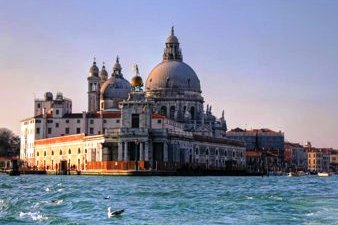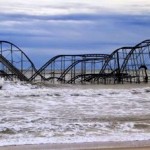 Some of the world’s most recognisable and important landmarks could be lost to rising sea levels if current global warming trends are maintained over the next two millennia.
Some of the world’s most recognisable and important landmarks could be lost to rising sea levels if current global warming trends are maintained over the next two millennia.
From the Statue of Liberty in New York to the Tower of London or the Sydney Opera House – sea level rise not only affects settlement areas for large parts of the world population but also numerous sites of the UNESCO World Heritage. This is shown in a new study by Ben Marzeion from the University of Innsbruck and Anders Levermann from the Potsdam Institute for Climate Impact Research (PIK).
“The physical processes behind the global rise of the oceans are gradual, but they will continue for a very long time,” says climate scientist Ben Marzeion. “This will also impact the cultural world heritage.”
The scientists computed the likely sea level rise for each degree of global warming and identified regions where UNESCO World Heritage will be put at risk throughout the coming centuries. While public interest so far was focused mainly on ecological and agricultural impacts of climate change, Marzeion and Levermann in the journal Environmental Research Letters now put the focus on the cultural heritage of mankind.
136 Out of 700 Listed Cultural Monuments will be Affected in the Long-Term
The UNESCO World Heritage List comprises a total of more than 700 cultural monuments. If global average temperature increases by just one degree Celsius, already more than 40 of these sites will directly be threatened by the water during the next 2000 years. With a temperature increase of three degrees, about one fifth of the cultural world heritage will be affected in the long term.
“136 sites will be below sea level in the long-run in that case if no protection measures are taken,” Ben Marzeion specifies. “The fact that tides and storm surges could already affect these cultural sites much earlier has not even been taken into account.”
Among the world heritage sites affected are, for instance, the historical city centres of Bruges, Naples, Riga and St. Petersburg, Venice and its Lagoon, Robben Island, and Westminster Abbey, and a number of sites in India and China.
In order to make reliable statements, the climatologists also consider the regionally different rates of sea level rise. “If large ice masses are melting and the water is dispersed throughout the oceans, this will also influence the Earth’s gravitational field,“ says Anders Levermann. “Sea level rise will therefore vary between regions.”
The scientists calculated future sea-level rise for all world regions and compared these projections with today’s coastal settlement areas and the sites of the cultural world heritage. “Our analysis shows how serious the long-term impacts for our cultural heritage will be if climate change is not mitigated,” says Anders Levermann. “The global average temperature has already increased by 0.8 degrees compared to pre-industrial levels. If our greenhouse gas emissions increase as they have done in the past, physical models project a global warming of up to five degrees by the end of this century.”
Currently Populated Regions Become Oceans

Apart from historical cultural monuments, regions that are currently populated by millions of people would thus be affected. With a global warming of three degrees, twelve countries around the world could lose more than half of their present land area and about 30 countries could lose one tenth of their area.
“Island states in the Pacific and the Caribbean as well as the Maldives and the Seychelles are particularly threatened, but not only these,” says Anders Levermann. “A majority of their population will eventually need to leave their home islands in the long-term, so most of their culture could be entirely lost sooner or later if the warming trend is not stopped,” Ben Marzeion adds.
Seven percent of the world’s population today lives in regions that, without massive protection, will eventually be below sea level if temperatures rise to three degrees. “If that sea level rise occurred today, more than 600 million people would be affected and would have to find a new home,” Marzeion emphasizes.
In Southeast Asia, where many people are living at the coasts, sea level rise will impact especially strong. But parts of the United States will be affected as well, as for instance the State of Florida. “These major long-term changes along our coastlines will most probably change cultural structures fundamentally,” says Marzeion. “If we do not limit climate change, the archaeologists of the future will need to search for major parts of our cultural heritage in the oceans.”
Check the following link to read/download the Full Study – “Loss of Cultural World Heritage and Currently Inhabited Places to Sea Level Rise”:
http://iopscience.iop.org/1748-9326/9/3/034001/article
Source: PIK.















